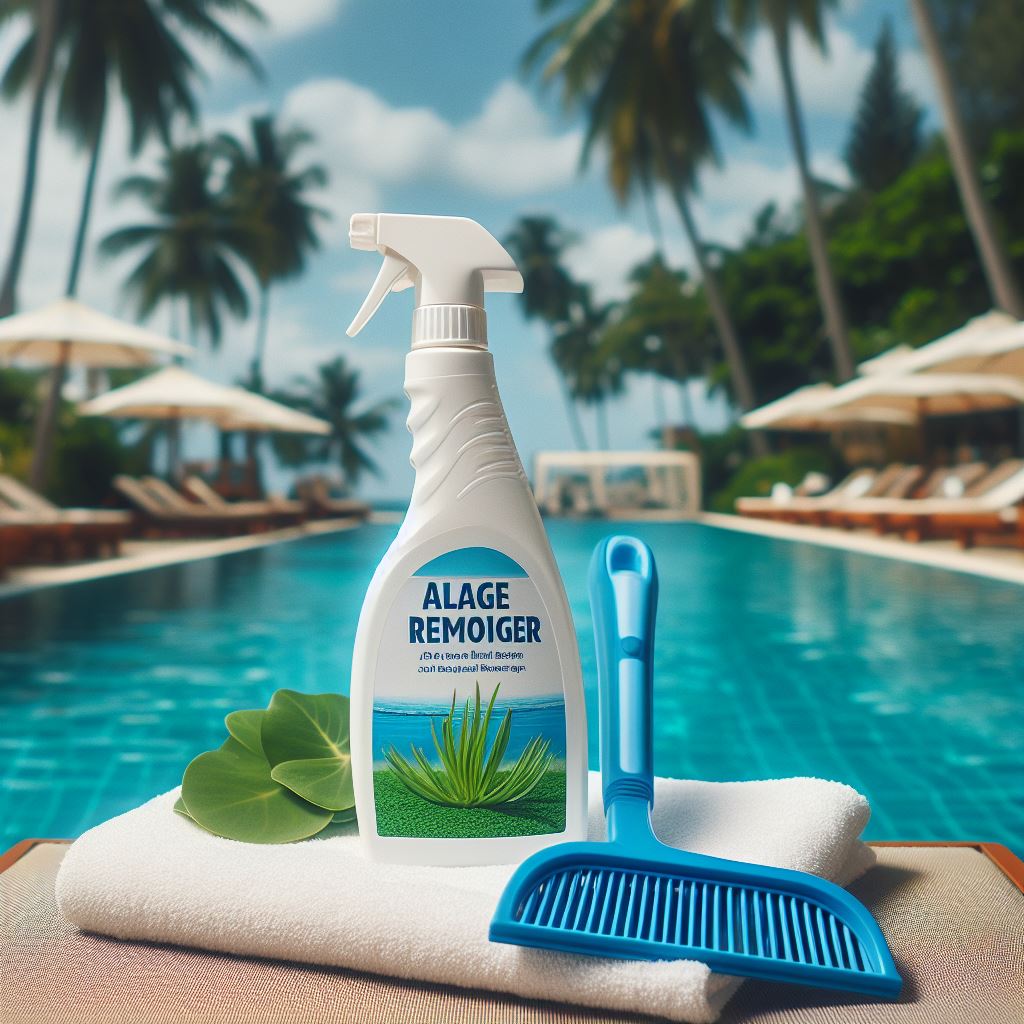Pool algaecides play a crucial role in preventing and controlling algae growth in swimming pools, ensuring clear and aesthetically pleasing water for swimmers. However, to ensure the effectiveness and safety of algaecide products, rigorous physical and chemical testing is essential. In this article, we will explore the importance of physical and chemical testing of pool algaecides, the methods involved, and the parameters evaluated to guarantee optimal performance and user safety.

Understanding Pool Algaecides
Pool algaecides are chemical formulations designed to inhibit algae growth and proliferation in swimming pools. These products typically contain active ingredients such as quaternary ammonium compounds (quats), copper-based compounds, or polymeric algaecides. Algaecides work by disrupting algae cell membranes, inhibiting photosynthesis, or interfering with algae reproduction, thereby preventing the formation of algae blooms and maintaining water clarity.
Importance of Physical and Chemical Testing
Physical and chemical testing of pool algaecides is essential to assess their efficacy, stability, compatibility with pool water chemistry, and potential risks to human health and the environment. Comprehensive testing helps manufacturers, pool operators, and regulatory agencies ensure that algaecide products meet quality standards and safety regulations. Key aspects of physical and chemical testing include:
Efficacy Testing
Evaluating the effectiveness of algaecide products in inhibiting algae growth under various environmental conditions, including temperature, pH, and sunlight exposure. Efficacy testing involves conducting laboratory experiments and field trials to assess the performance of algaecides in real-world pool settings.
Stability Testing
Assessing the stability of algaecide formulations over time to determine their shelf life and storage requirements. Stability testing involves subjecting algaecide products to accelerated aging tests, temperature cycling, and exposure to light and humidity to simulate long-term storage conditions.
Compatibility Testing
Testing the compatibility of algaecide products with other pool chemicals, including chlorine, pH adjusters, and sanitizers. Compatibility testing helps prevent adverse chemical reactions and ensure the safe and effective use of algaecides in conjunction with other pool treatment chemicals.
Residue Testing
Analyzing algaecide residues in pool water to determine the concentration of active ingredients and assess their persistence and degradation kinetics. Residue testing helps establish appropriate dosage rates and application intervals for algaecide treatments.
Toxicity Testing
Evaluating the acute and chronic toxicity of algaecide products to aquatic organisms, including fish, invertebrates, and algae. Toxicity testing helps identify potential environmental risks associated with algaecide use and ensures compliance with regulatory requirements.
Physical and Chemical Testing Methods
Physical and chemical testing of pool algaecides involves a combination of laboratory analyses, field measurements, and standardized testing protocols. Common methods and techniques used in algaecide testing include:
Spectrophotometry
Quantifying the concentration of active ingredients in algaecide formulations using UV-visible spectrophotometers. Spectrophotometric analysis allows for accurate measurement of algaecide concentrations and assessment of product stability and degradation kinetics
Chromatography
Separating and identifying individual components of algaecide formulations using chromatographic techniques such as high-performance liquid chromatography (HPLC) or gas chromatography (GC). Chromatographic analysis helps identify impurities, degradation products, and potential contaminants in algaecide products.
Microbiological Assays
Assessing the antimicrobial activity of algaecide products using microbiological assays such as disk diffusion assays or agar dilution methods. Microbiological testing helps determine the effectiveness of algaecides against algae and other microorganisms in pool water.
Accelerated Aging Studies
Subjecting algaecide formulations to accelerated aging studies using temperature and humidity chambers to simulate long-term storage conditions. Accelerated aging studies help predict the stability and shelf life of algaecide products under various environmental conditions.
Ecotoxicity Testing
Conducting standardized ecotoxicity tests such as acute toxicity tests (LC50) and chronic toxicity tests (NOEC/EC50) to assess the potential adverse effects of algaecide products on aquatic organisms. Ecotoxicity testing helps evaluate the environmental safety of algaecides and identify potential hazards to aquatic ecosystems.
Conclusion
In conclusion, physical and chemical testing of pool algaecides is essential to ensure their efficacy, stability, compatibility, and safety for use in swimming pools. Comprehensive testing helps manufacturers, pool operators, and regulatory agencies assess the performance and environmental impact of algaecide products and ensure compliance with quality standards and safety regulations. By employing a combination of laboratory analyses, field measurements, and standardized testing protocols, stakeholders can make informed decisions regarding the selection, application, and management of algaecides to maintain clear, safe, and aesthetically pleasing pool water for swimmers.

 Instant
Quote
Instant
Quote Email
Us
Email
Us